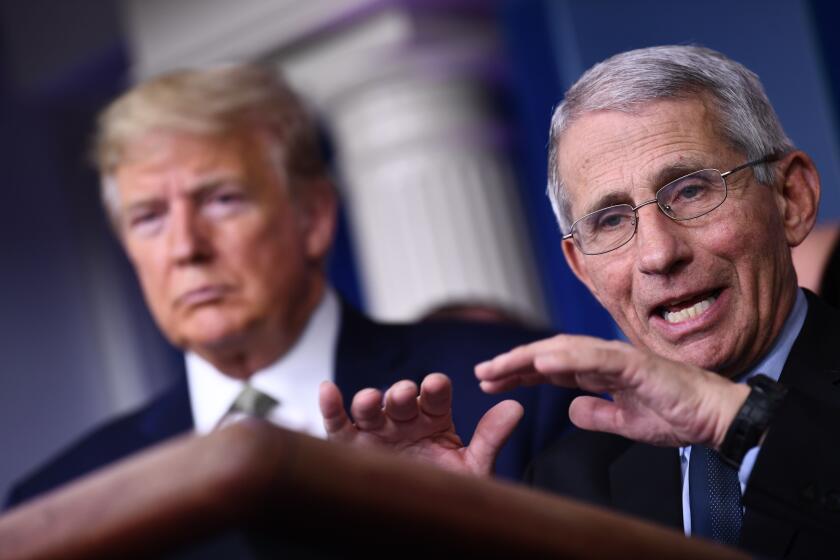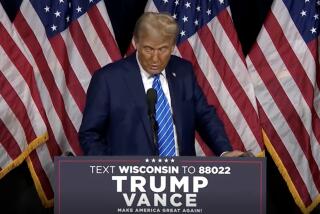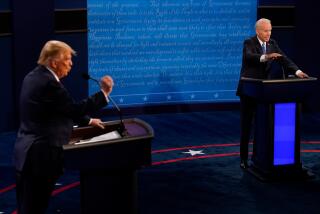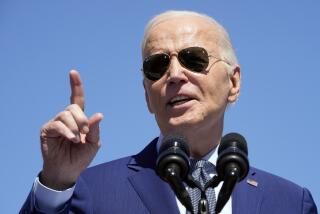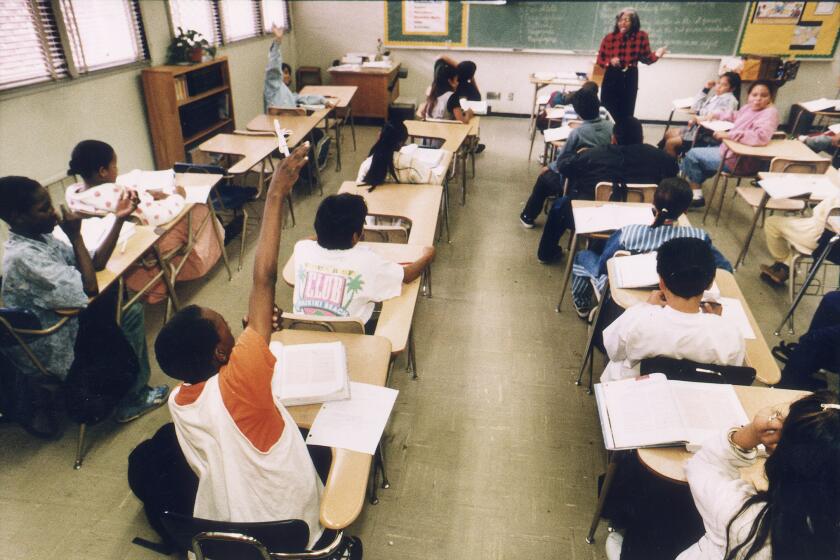Op-Ed: A virus is raging. The economy is in free fall. Why Trump’s approval rating is still going up
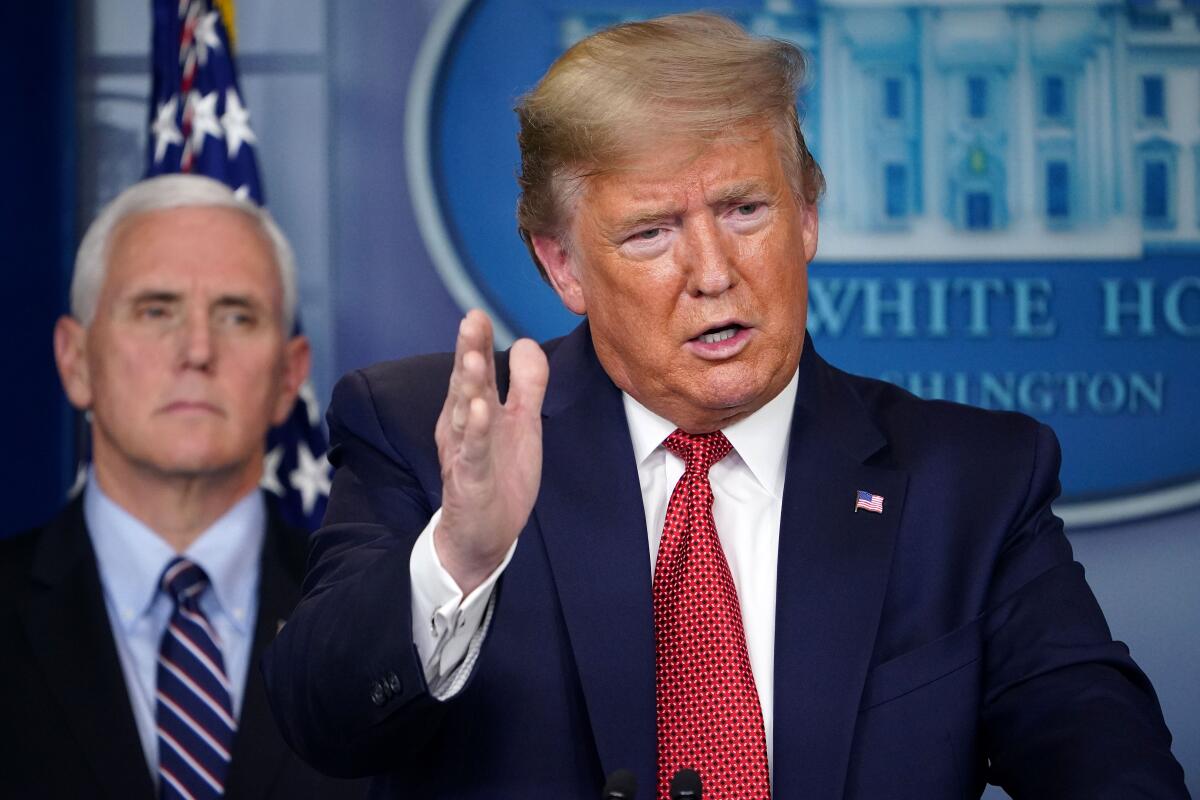
- Share via
The number of cases of COVID-19 is soaring in the United States. The economy is in free fall. Tens of millions of Americans are locked down in their homes. Hospitals around the country are becoming overwhelmed by the day. The U.S. is arguably facing its most severe crisis since World War II.
Yet despite the worsening pandemic and withering criticism of President Trump’s performance by public health experts and media pundits, his overall approval rating is up 5 percentage points in the most recent weekly Gallup poll. For only the second time in his presidency, Gallup found more Americans approving (49%) than disapproving (45%) of his job performance. Some 60% gave him positive reviews for his handling of the pandemic.
What accounts for this?
Scholars refer to the spike in presidential approval ratings that sometimes accompanies the nation’s darkest times as the “rally-round-the-flag” effect. Such rallies can follow sudden, dramatic crises, such as the onset of a war. Franklin Roosevelt’s approval rating rose by 11 percentage points after Japan attacked Pearl Harbor in December 1941. George W. Bush saw his approval ratings spike by 35 points within four days of 9/11, the largest approval rally ever recorded.
But this doesn’t always happen. Whether a president wins a surge in public approval depends on several factors beyond just rising patriotism in times of national crisis. Those factors may explain why Trump is benefiting now.
For instance, the political scientist Richard Brody has shown that rallies typically occur only when the president enjoys bipartisan congressional support for his crisis management. In my work with Tim Groeling, I’ve found that public approval ratings improve with large-scale crises, such as overseas ground invasions, and that praise from opposition party leaders matters most of all, because it is highly credible to their fellow partisans (in this instance, Democrats). I’ve also found that the rise in approval ratings comes largely from opposition partisans and independents (the president’s supporters continue to support him), while less-popular presidents tend to gain larger rallies, simply because they have more room to improve.
It is outrageous that we have to witness the spectacle of public health officials tailoring their statements so as to not offend the president.
Trump’s approval increase fits these patterns. Many of the nation’s highest-profile Democratic governors — such as New York’s Andrew Cuomo, California’s Gavin Newsom, and Washington’s Jay Inslee — have offered muted praise for many of the administration’s decisions while avoiding harsh criticisms. Similarly, congressional leaders from both parties emphasized bipartisan cooperation between Congress and the White House in negotiating the $2-trillion rescue package.
Americans are thus hearing bipartisan support for Trump’s crisis management. Democrats, in particular, see their leaders mostly supporting the president. The truth is, the public looks to their partisan elected leaders for guidance far more than media pundits or subject matter experts.
Unsurprisingly, given the wave of support from Democratic leaders, Trump’s COVID-19 rally has come mostly from Democrats (plus-6 points) and independents (plus-8 points). This compares to a 1-point increase among Republicans, 91% of whom already approved of the president’s performance.
Still, considering the extraordinary magnitude of the current crisis, the very modest size of Trump’s approval rally is striking. The COVID-19 rally pales in comparison not only to Bush’s post-9/11 rally, but also to those following the start of the 1991 Persian Gulf War (plus-24 percentage points) and 2003 (plus-13 points) Iraq war, the 2011 killing of Osama bin Laden (plus-9 points), and even the U.S. invasion of Panama in 1989 (plus-9 points).
Of course, prior to the COVID-19 crisis, Trump consistently ranked among the least popular modern presidents, primarily because of extremely low approval among Democrats and independents. No prior president has had a larger approval gap between Democrats and Republicans; in February, the gap was 87 points.
That relatively few Democrats and independents have shifted over to support the president in this pandemic speaks to the extraordinarily polarized times.
Improvements in public approval ratings are notoriously ephemeral — usually lasting only a month or so. The COVID-19 rally seems unlikely to last long enough to help Trump’s reelection effort.
Indeed, as the campaign season approaches, the bipartisan support he has thus far received will almost certainly diminish. It’s impossible to predict how the current crisis will unfold. But unless the pandemic and all its attendant consequences are successfully resolved, the most likely scenario is that Trump has now reached his approval ceiling. If so, it may be downhill from there.
Matthew A. Baum is a professor of public policy at Harvard University’s John F. Kennedy School of Government.
More to Read
A cure for the common opinion
Get thought-provoking perspectives with our weekly newsletter.
You may occasionally receive promotional content from the Los Angeles Times.
